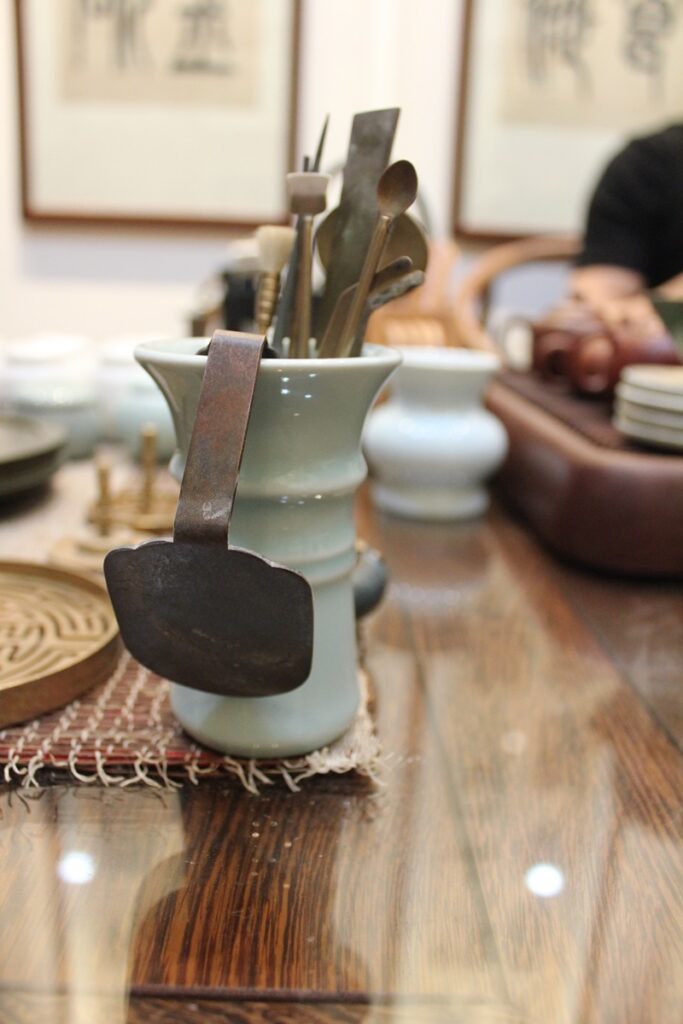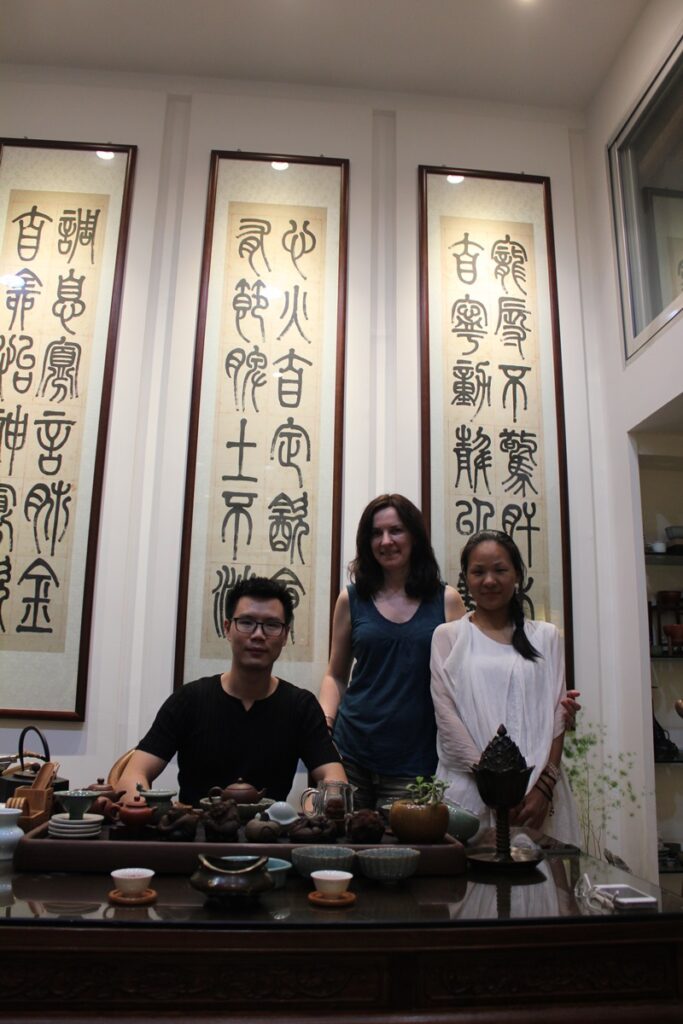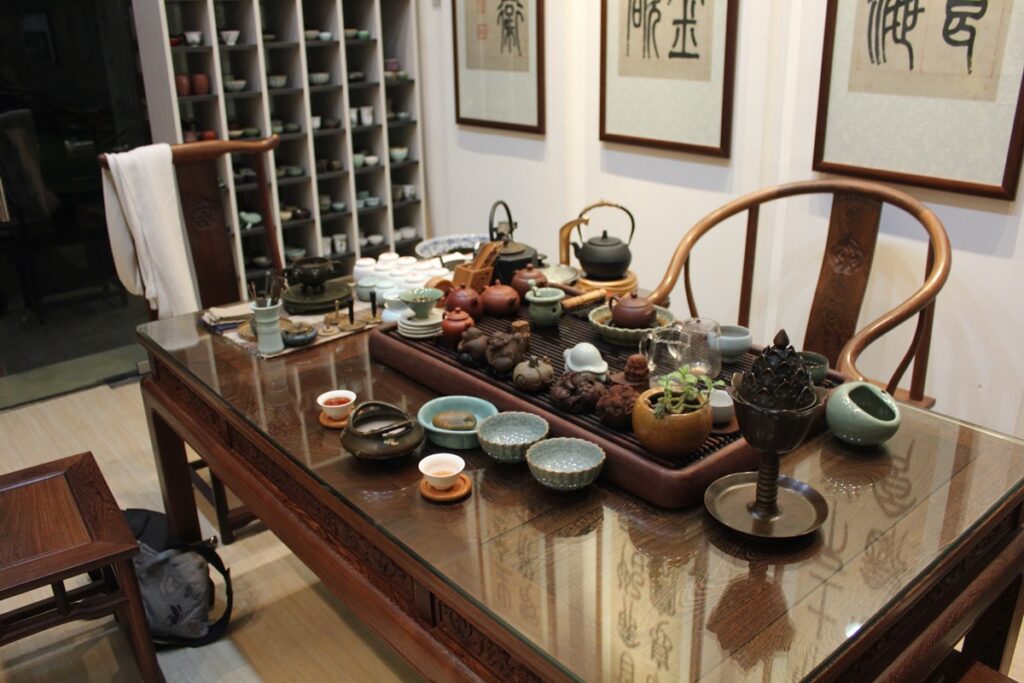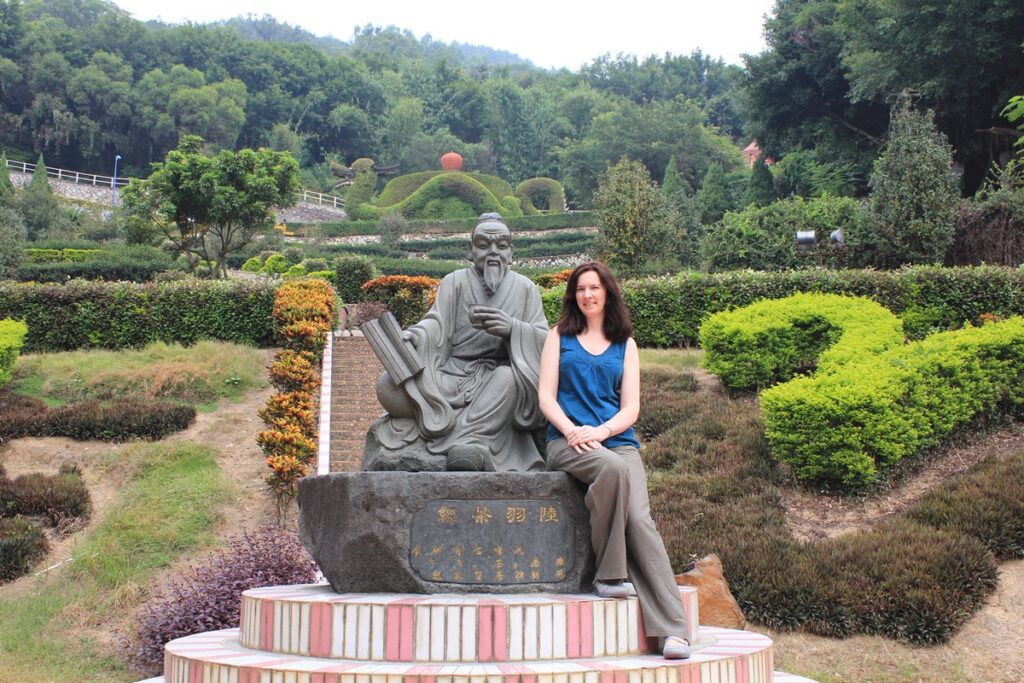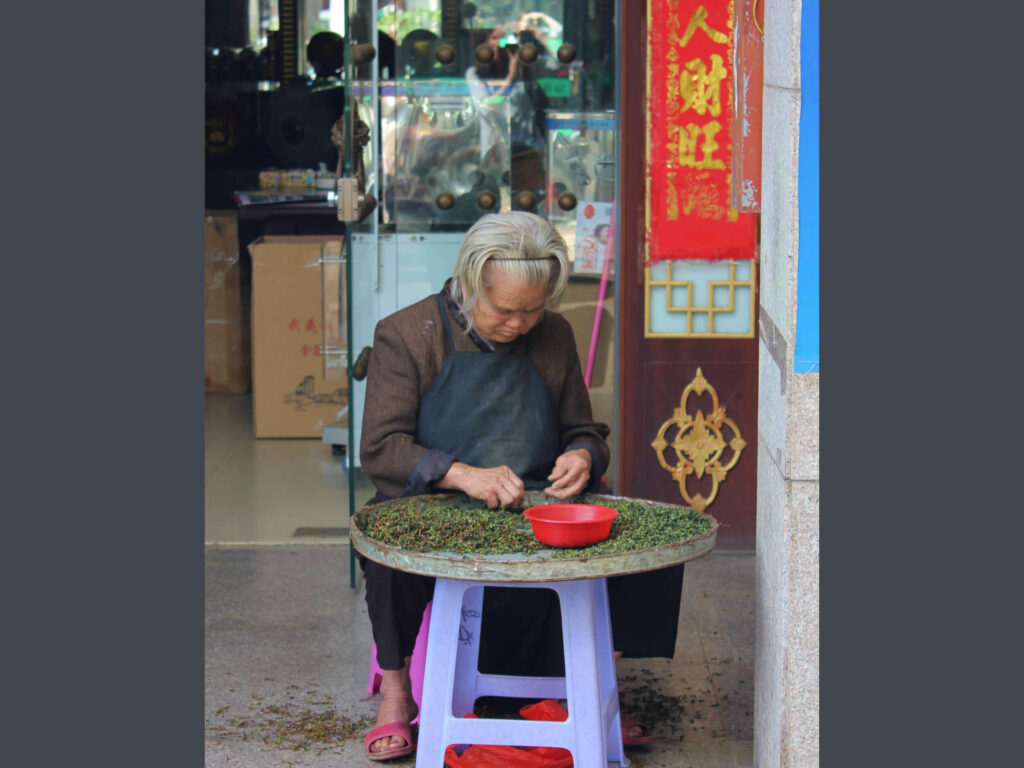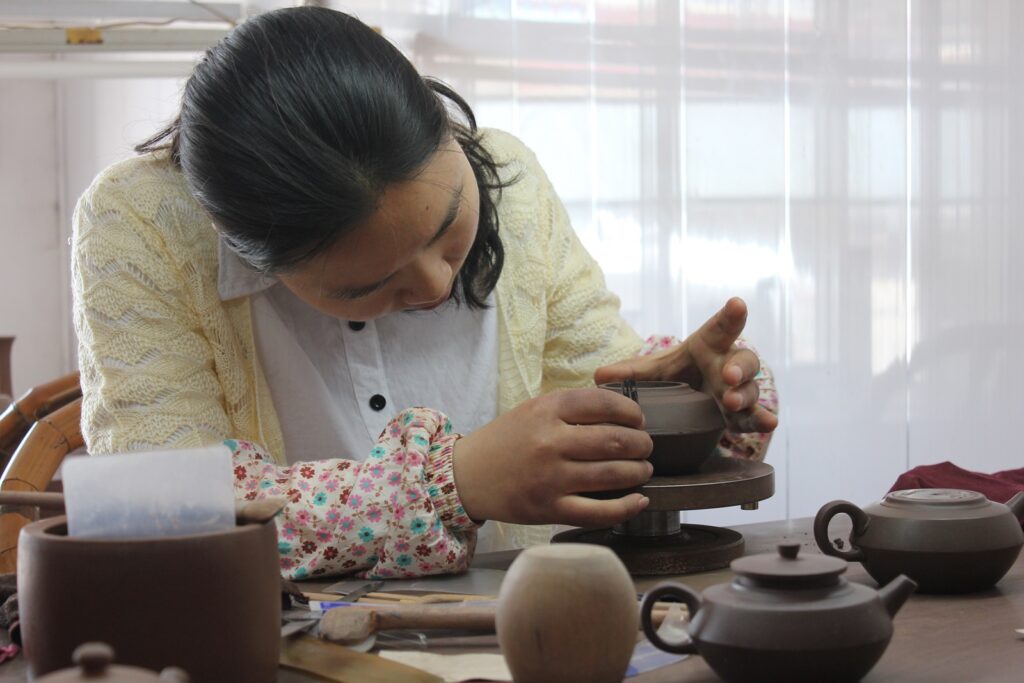Tie Guan Yin, 铁观音, Iron Goddess of Mercy, or just plain old Iron Goddess. Probably the most popular oolong in China. And quite right too. In a quest to find out more about my favourite Oolong tea – Tie Guan Yin, 铁观音, Iron Goddess of Mercy, or just plain old Iron Goddess – my friend, Jasmine, and I set off one October weekend to the source of Tie Guan Yin – Anxi in Fujian province.
On the first couple of days, we sipped tea at the largest tea wholesale market in the world, paid homage to the Mother tea bush and got hands-on with some oolong tea processing. For our third and final day we headed to the Tie Guan Yin Tea Culture Park in Anxi. The first thing you notice is the rather large and magnificent teapot fashioned out of shrubbery with a dragon’s head for a spout.
Tie Guan Yin Tea Culture Park
Lu Yu was the original tea master. He wrote the first book on all things tea, Cha Jing (The Classic of Tea), back in the Tang Dynasty between 760AD and 762AD.
The park also houses a museum dedicated to the history of Tie Guan Yin production. Inside, there’s a step by step guide of how it was done in the olden days, illustrated with ancient tea production equipment. Thank you to my good friend and fellow tea adventurer, Jasmine, for translating the steps!
How to make Tie Guan Yin
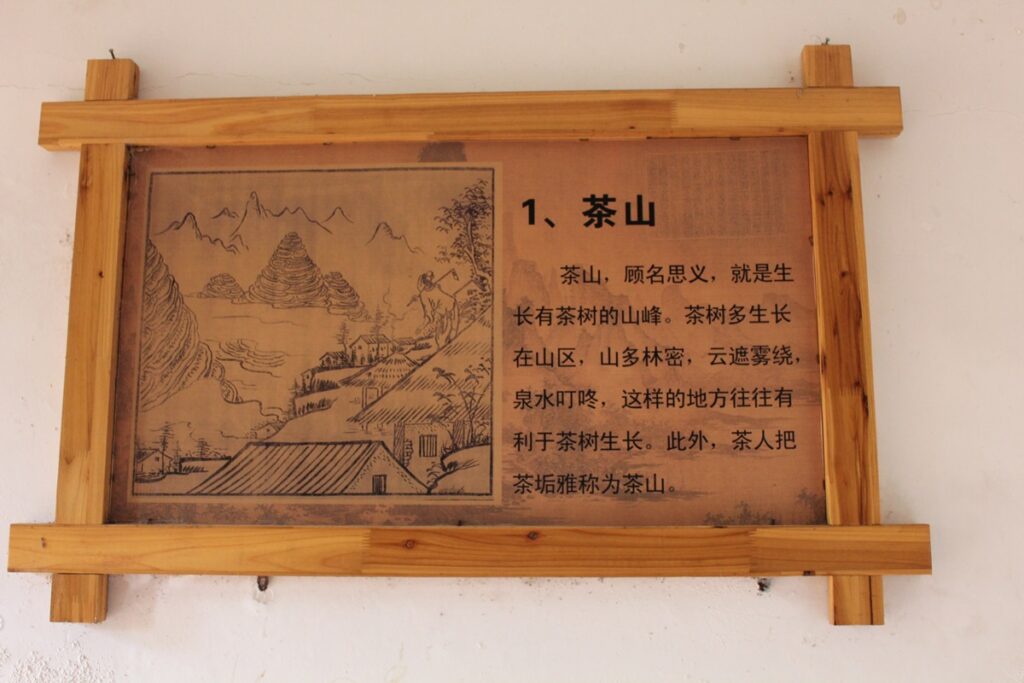
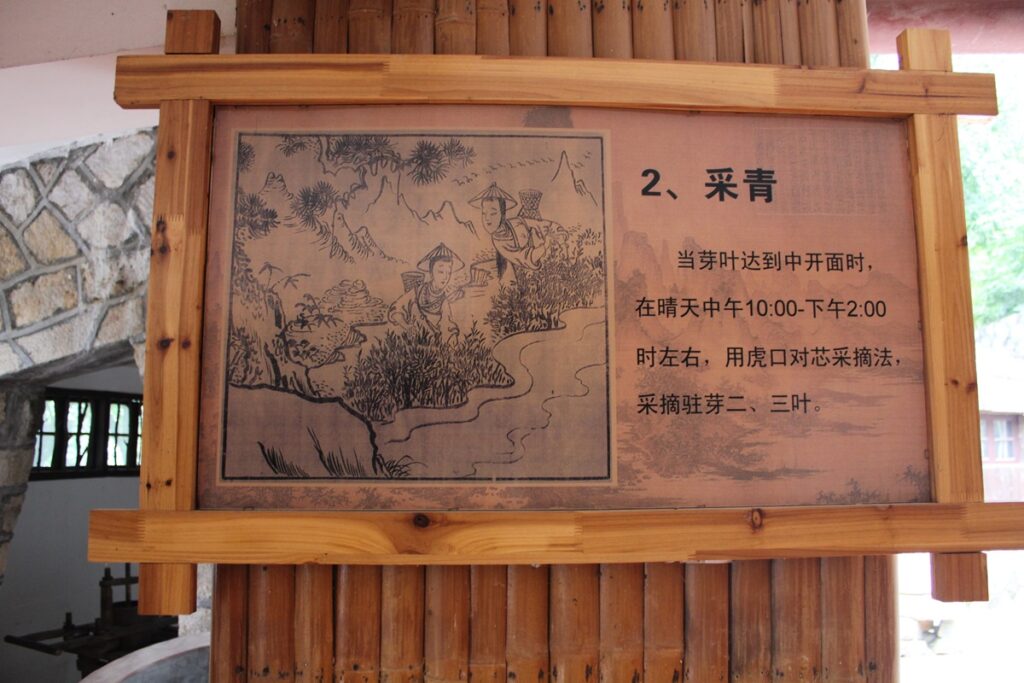
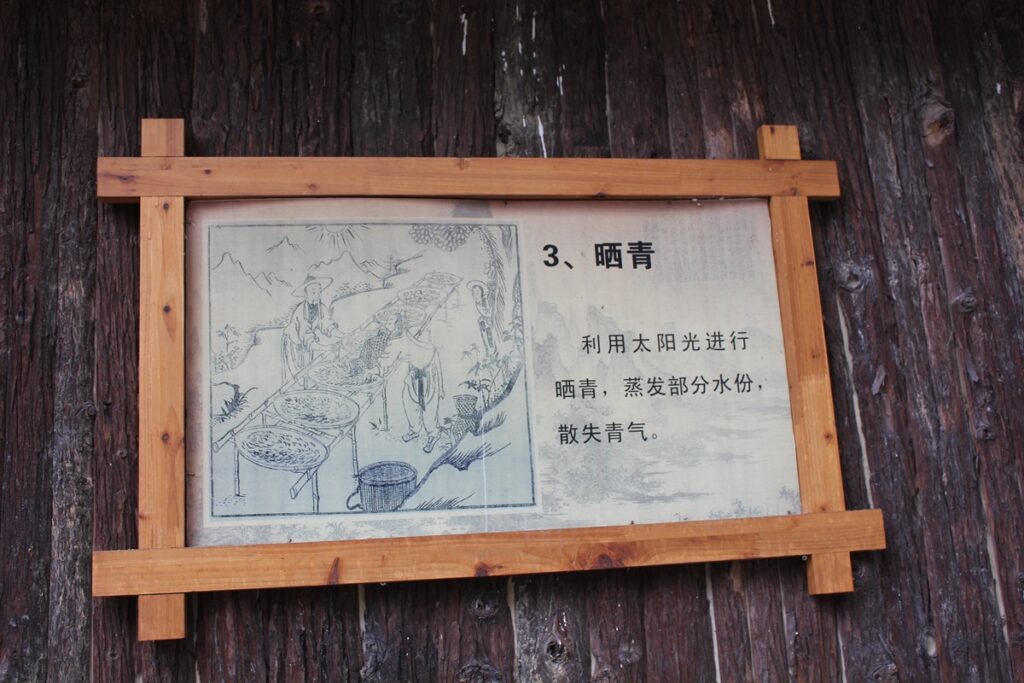
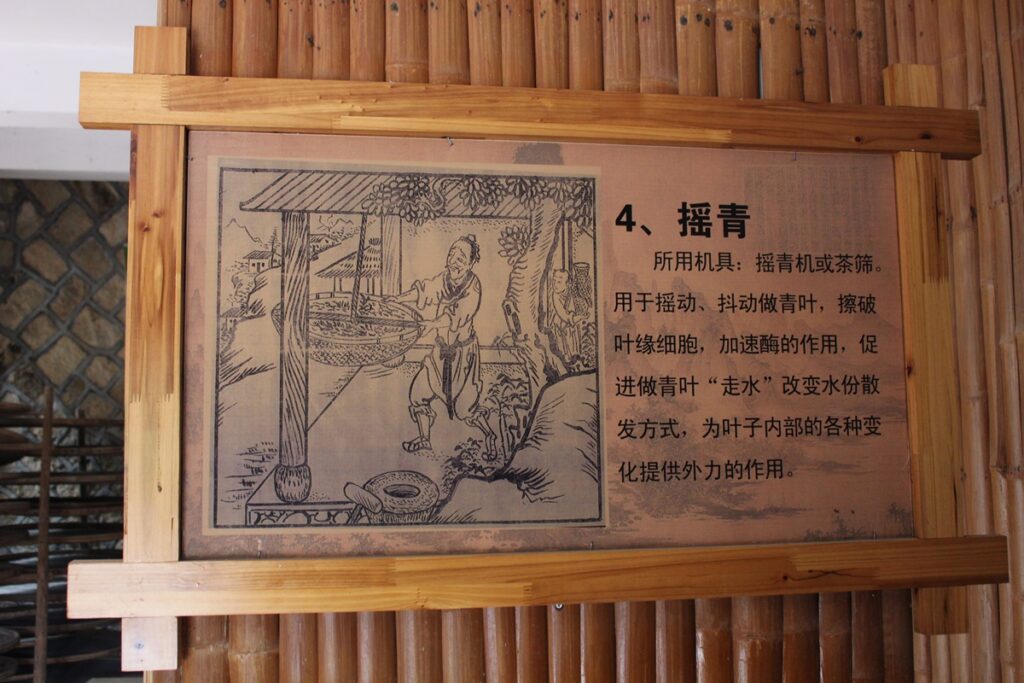
1. Tea Mountains
Natural tea trees usually grow on mountains that are rich in moisture e.g. mist, mountain springs. People call those mountains “Tea Mountains”.
2. Tea Plucking
The best time to pluck tea leaves is between 10am and 2pm. Usually pluck the bud together with a couple of tea leaves.
3. Sun Withering
Let the tea leaves dry naturally under the sunlight.
4. Shaking
Shake the tea leaves to break the edge of the tea leaves and increase the effect of the enzymes. Enzymes are the natural chemicals inside tea leaves that turn the leaf from green to black when exposed to the oxygen in the air. It also changes the moisture level in the tea leaves.
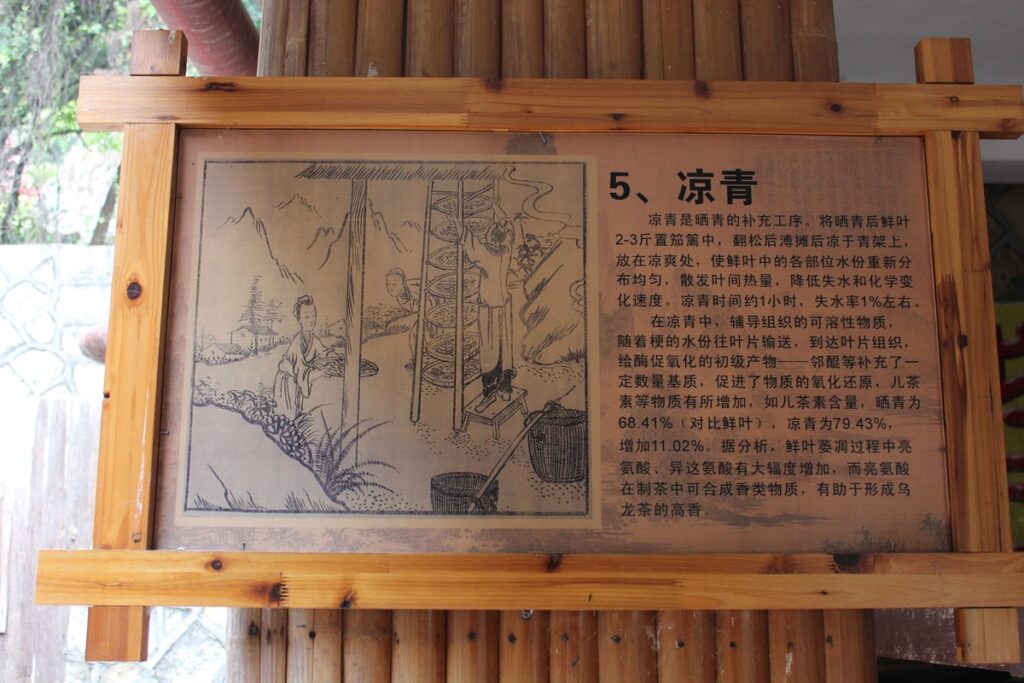
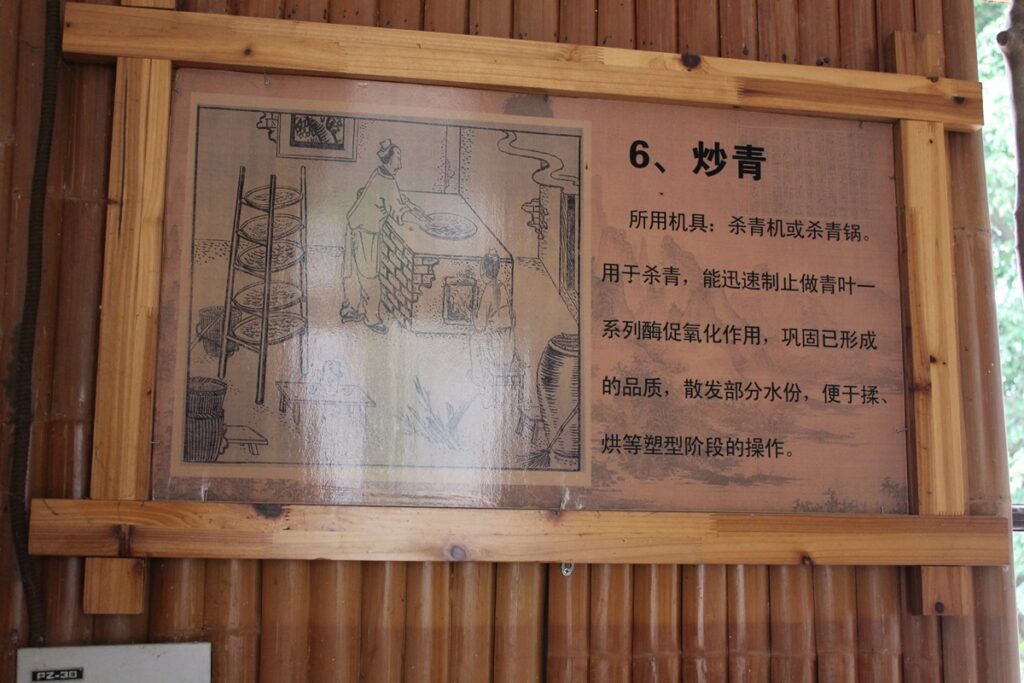
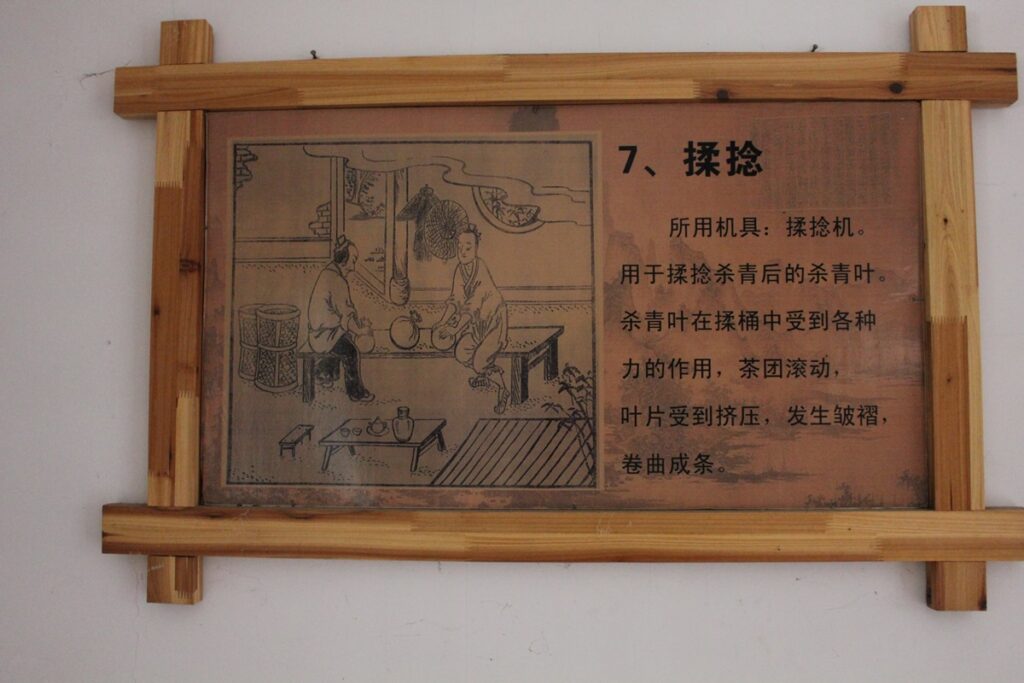
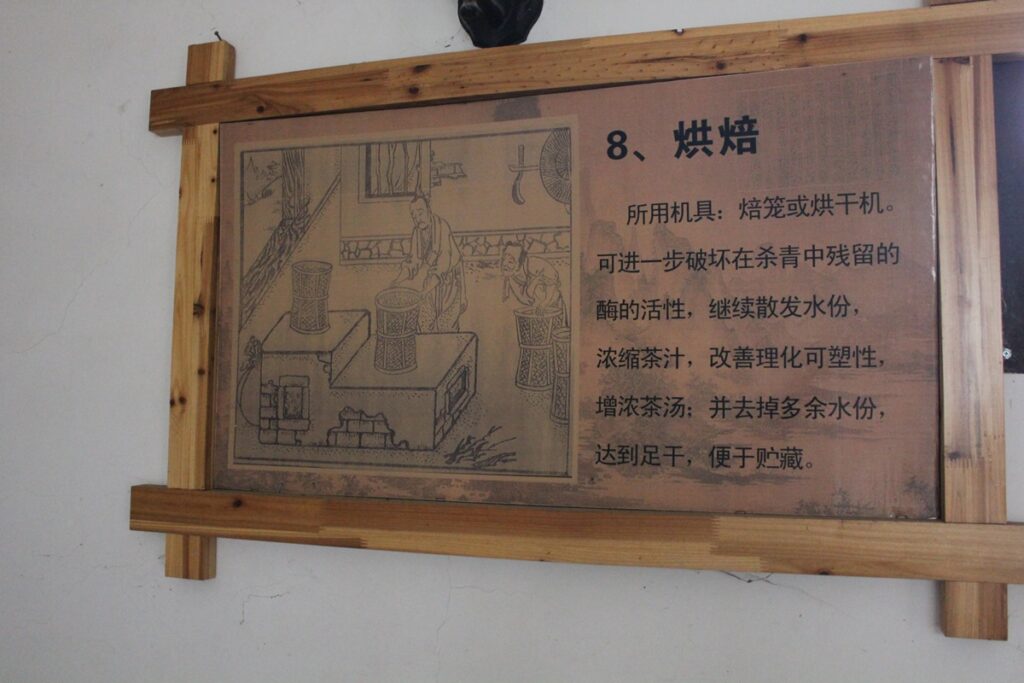
5. Indoor Withering [Fermentation/Oxidation]
Put a couple of jin [jin is a measurement equal to 500g] on a bamboo tray for 1 hour. During this process the natural chemicals increase/are produced, this is the step that is said to give oolong tea its special aroma.
6. Roasting
Arrests the oxidation process, fixes the quality of the tea leaves, further decreases the moisture content in the tea leaves. Prepares the tea leaves for the next process.
7. Rolling
Roll the tea leaves into shape. As illustrated in Step 7 picture, the tea leaves are put in a cloth that forms a ball shape, and the leaves are rolled inside this to form individual round tea balls. Another way is using the wooden equipment which presses and rolls the leaves.
8. Baking
Dry the tea leaves. This process also increases the taste of tea and prepares the tea for storage.
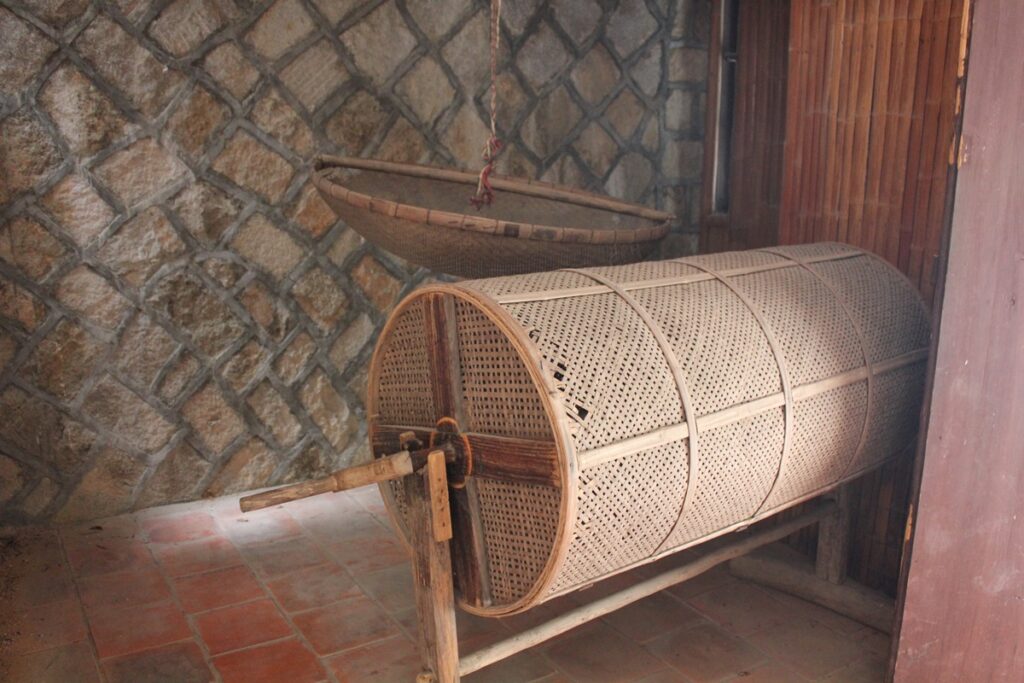
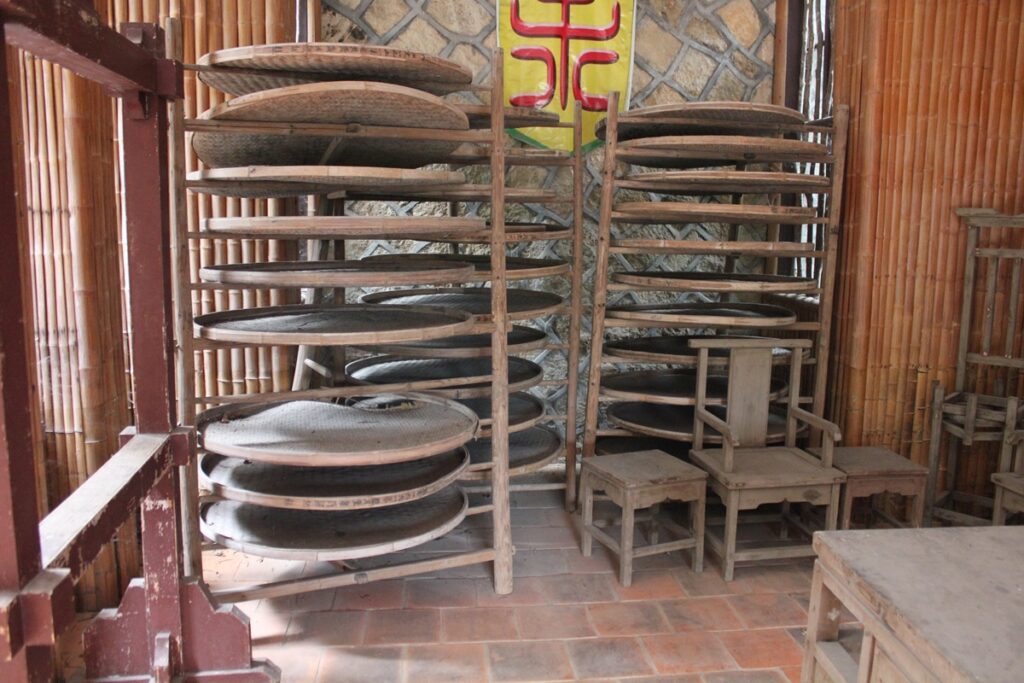
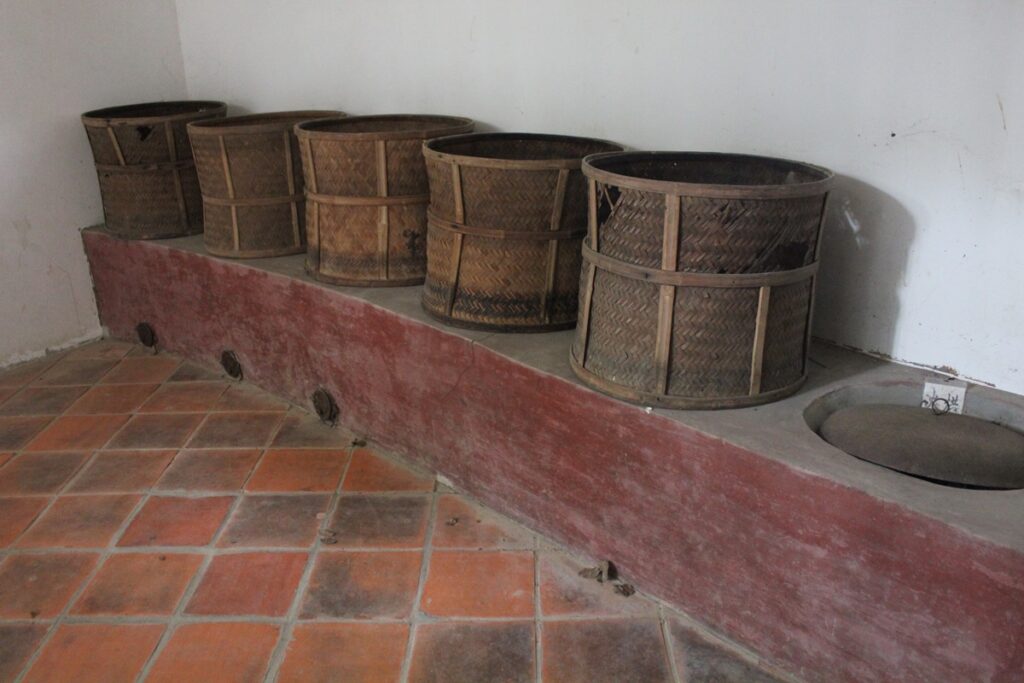
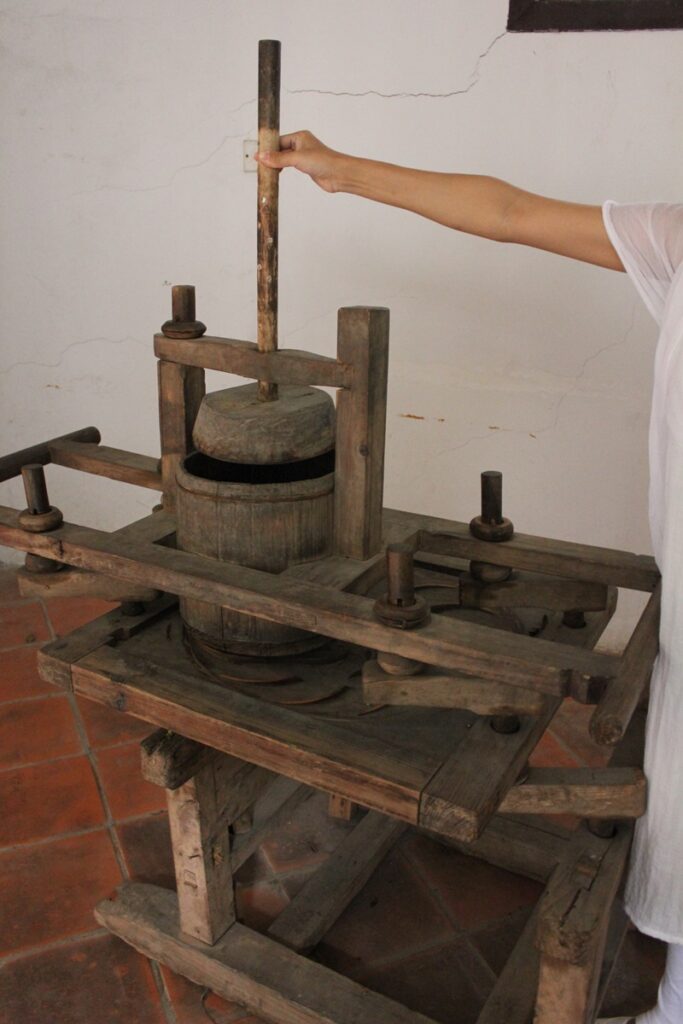
Pu’er in Tie Guan Yin land
Not everyone in Anxi County drinks Tie Guan Yin! Our last night was spent in Quanzhou, to be close to the airport. We went for a wander and happened upon a little teashop. It’s owned by a young man heavily into his Pu’er tea, not a crumb of Tie Guan Yin to be seen. His shop is a treasure trove of beautiful tea things that he’s collected on his travels. After drinking Pu’er with him and his friends, I bought a set of beautiful teacups that I’d spotted. Though it felt like I was taking away part of his collection … I will look after them very well, promise…
